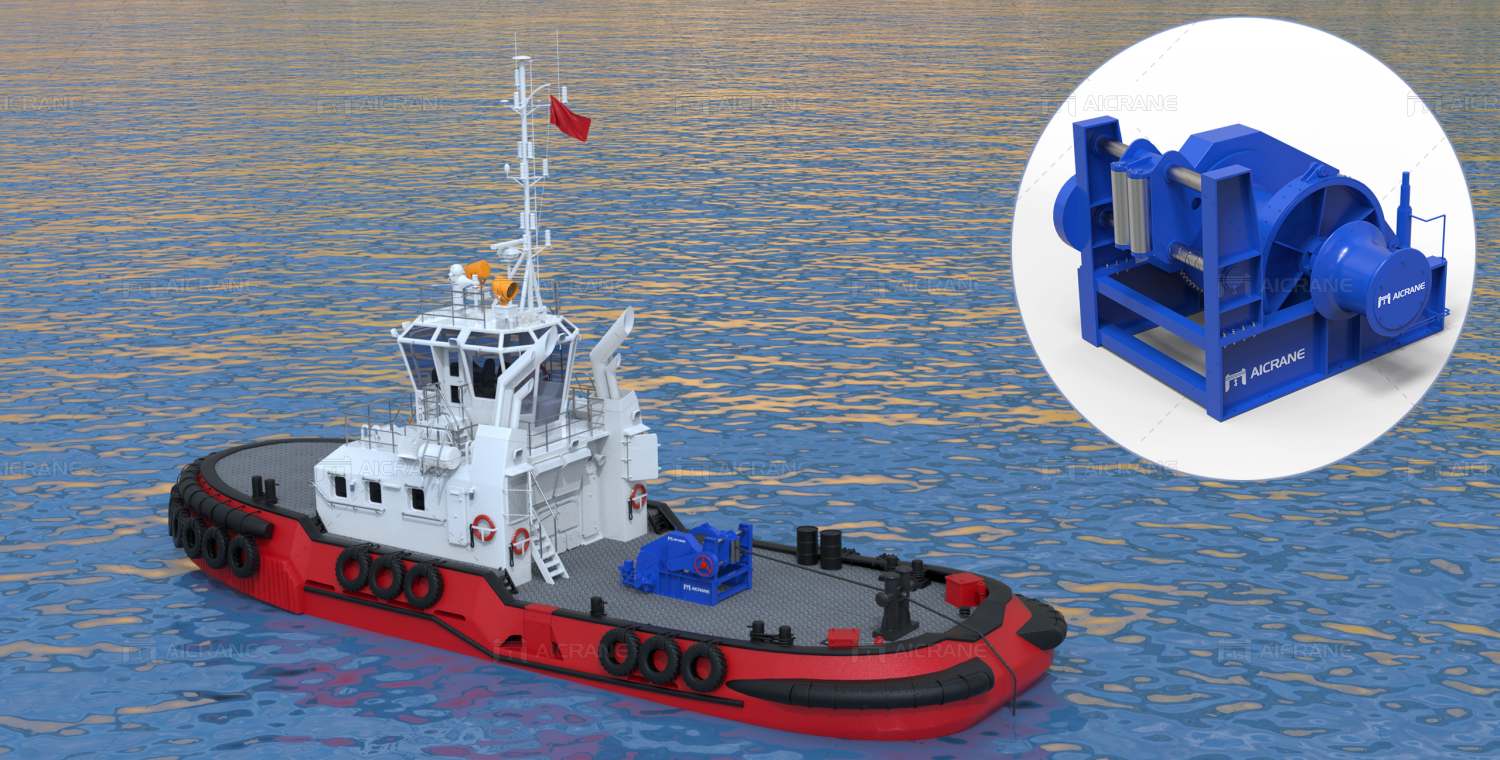Marine towing winches are essential for a variety of maritime operations, providing the necessary power and control to tow vessels safely and efficiently. These high-performance winches are designed to handle the demanding conditions of the marine environment, ensuring reliability and durability.
Understanding the key technical specifications of marine towing winch is crucial for selecting the right equipment for your needs. This article will delve into the important technical aspects of high-performance marine towing winch, including load capacity, power sources, braking systems, and materials.

Load Capacity
One of the most critical specifications of a marine towing winch is its load capacity. This refers to the maximum weight the winch can safely tow. Load capacity is typically measured in tons and varies based on the size and type of winch. High-performance marine towing winches often have load capacities ranging from 10 to 200 tons, with specialized winches capable of handling even greater loads.
Factors Influencing Load Capacity
Drum Size: The size of the drum affects the amount of rope or wire the winch can hold, which in turn influences the load capacity. Larger drums can accommodate longer and thicker cables, allowing for higher load capacities.
Motor Power: The power of the winch’s motor, measured in horsepower (HP) or kilowatts (kW), directly impacts its ability to tow heavy loads. More powerful motors provide greater pulling force.
Gear Ratio: The gear ratio determines the mechanical advantage of the winch. Higher gear ratios increase the pulling power but may reduce the speed of operation.
Power Sources
Marine towing winches can be powered by various sources, each offering distinct advantages:
Electric Winches: Electric towing winches are popular due to their ease of use and reliability. They are powered by electric motors, which can be AC or DC. Electric marine winches are suitable for medium to heavy-duty towing operations and are often preferred for their simplicity and lower maintenance requirements.
Hydraulic Winches: Hydraulic winches are known for their high power output and durability. They are powered by hydraulic systems, making them ideal for heavy-duty and continuous operation. Hydraulic towing winches are preferred in commercial and industrial settings due to their robust performance and ability to operate in harsh environments.
Diesel Winches: Diesel-powered winches are used in situations where electric or hydraulic power is unavailable or impractical. They offer high power and are suitable for remote or emergency operations.

Braking Systems
The braking system is a crucial safety feature in marine towing winches. It ensures controlled and safe operations, especially under heavy loads. There are several types of braking systems used in high-performance winches:
Manual Brakes: These are simple and reliable, requiring manual engagement. They are typically used in smaller winches or as a backup system.
Automatic Brakes: Automatic braking systems engage when the winch is stopped or if there is a power failure. They provide a higher level of safety by preventing accidental load release.
Dynamic Brakes: Dynamic brakes use the winch motor as a generator to create resistance, slowing down the drum gradually. This type of brake is beneficial for controlling the descent of heavy loads.
Hydraulic Brakes: Hydraulic braking systems provide smooth and precise control, ideal for heavy-duty applications. They are often integrated with hydraulic winches for seamless operation.
Materials and Construction
The materials used in the construction of marine towing winches significantly impact their performance and durability. High-performance winches are typically made from the following materials:
Steel: Steel is the most common material used in winch construction due to its strength and durability. Galvanized or stainless steel is often used to provide corrosion resistance, essential in the harsh marine environment.
Aluminum: Aluminum is used in some winch components to reduce weight without sacrificing strength. It is particularly beneficial in applications where weight savings are critical.
Synthetic Materials: Advances in materials technology have led to the use of high-strength synthetic ropes and components. These materials offer excellent strength-to-weight ratios and resistance to environmental degradation.
Additional Technical Features
High-performance marine towing winches may also include additional technical features to enhance their functionality and safety:
Remote Control Systems: Remote control systems allow operators to control the winch from a safe distance, improving safety and convenience.
Load Monitoring Systems: These systems provide real-time data on the load being towed, helping operators ensure safe and efficient operations.
Emergency Stop Mechanisms: Emergency stop mechanisms allow for the immediate cessation of winch operations in case of an emergency, preventing accidents and damage.
High-performance marine towing winches are vital for a wide range of maritime operations, from commercial shipping to offshore construction. Understanding the key technical specifications, such as load capacity, power sources, braking systems, and materials, is essential for selecting the right winch marine for your needs. By considering these factors, you can ensure that your winch is capable of handling the demands of your specific applications, providing reliable and efficient performance in even the most challenging conditions. Investing in a high-quality marine towing winch not only enhances operational efficiency but also ensures safety and longevity, making it a crucial component of any maritime operation.
